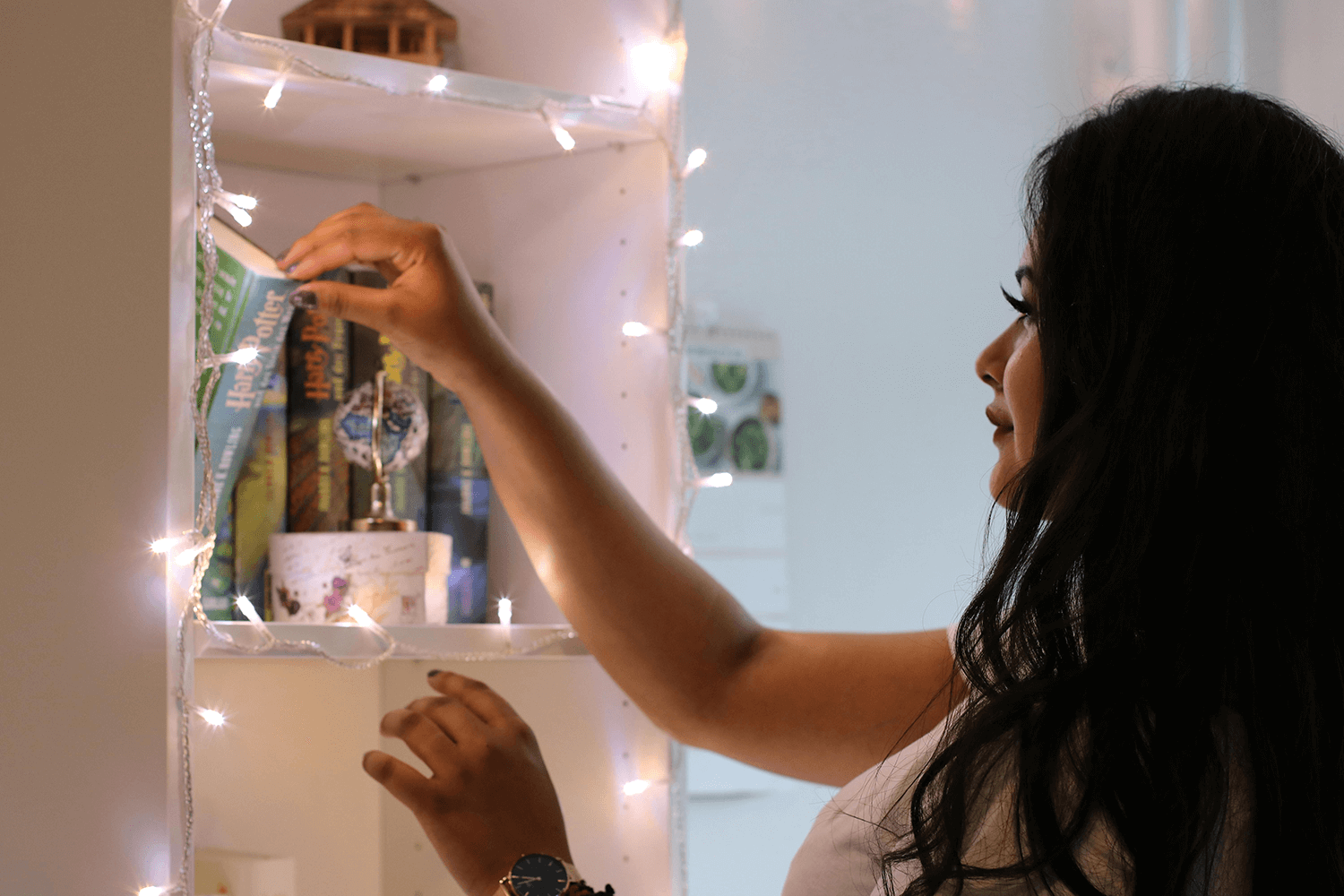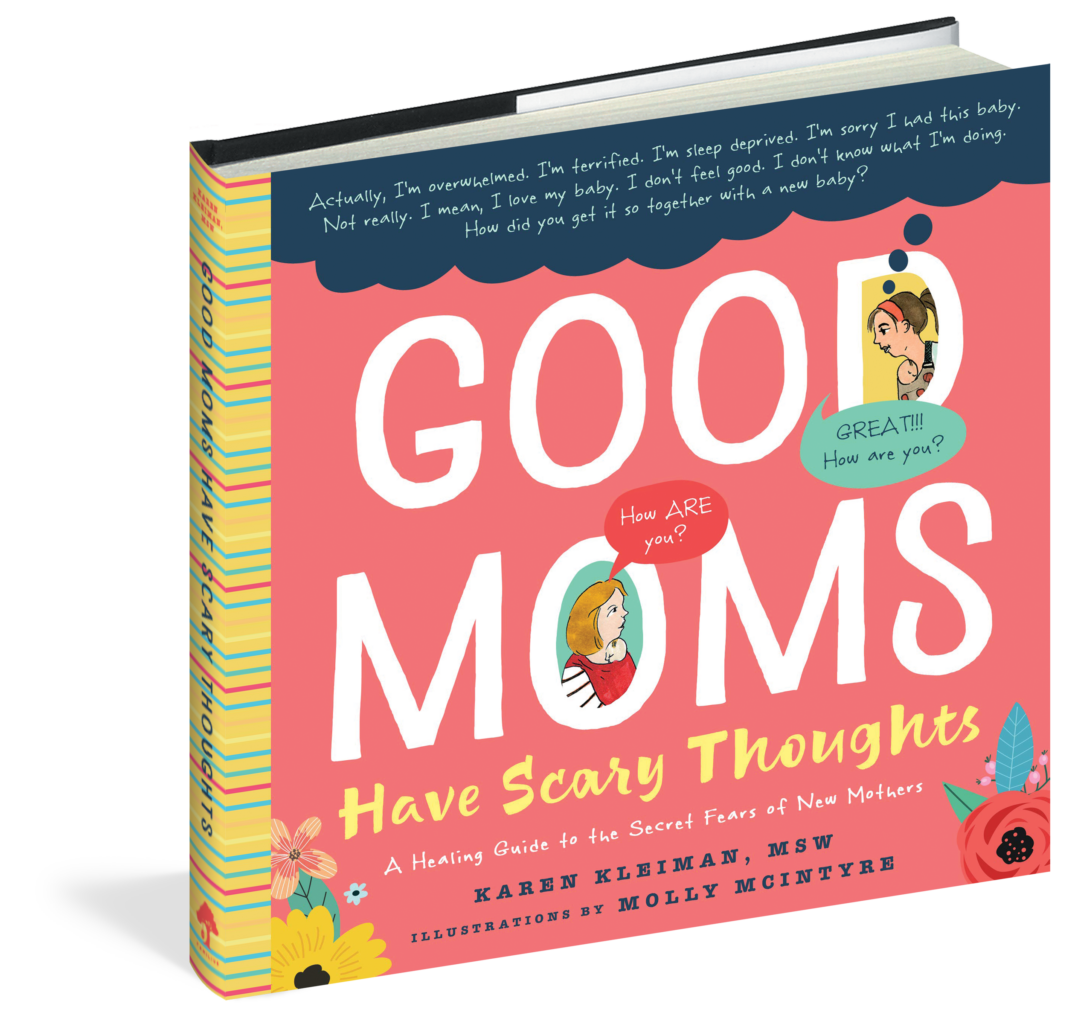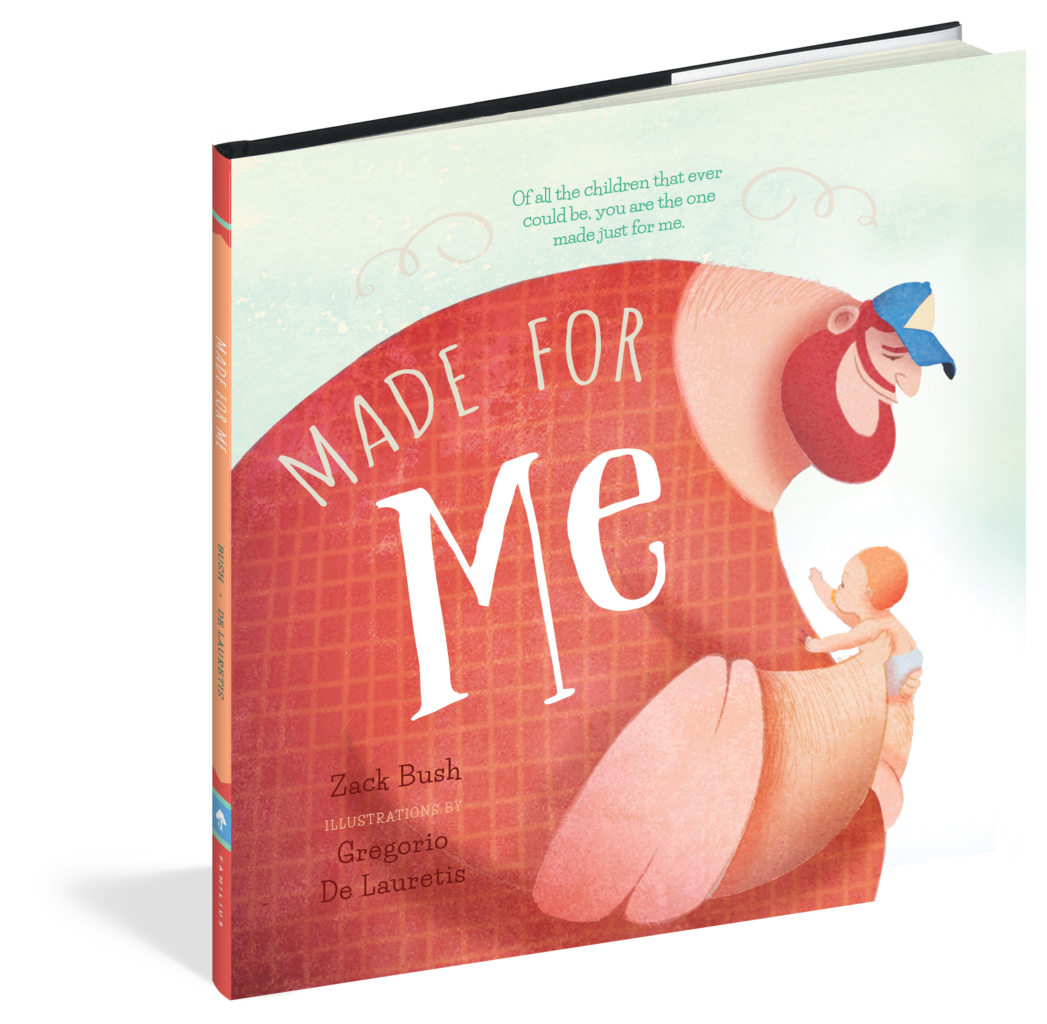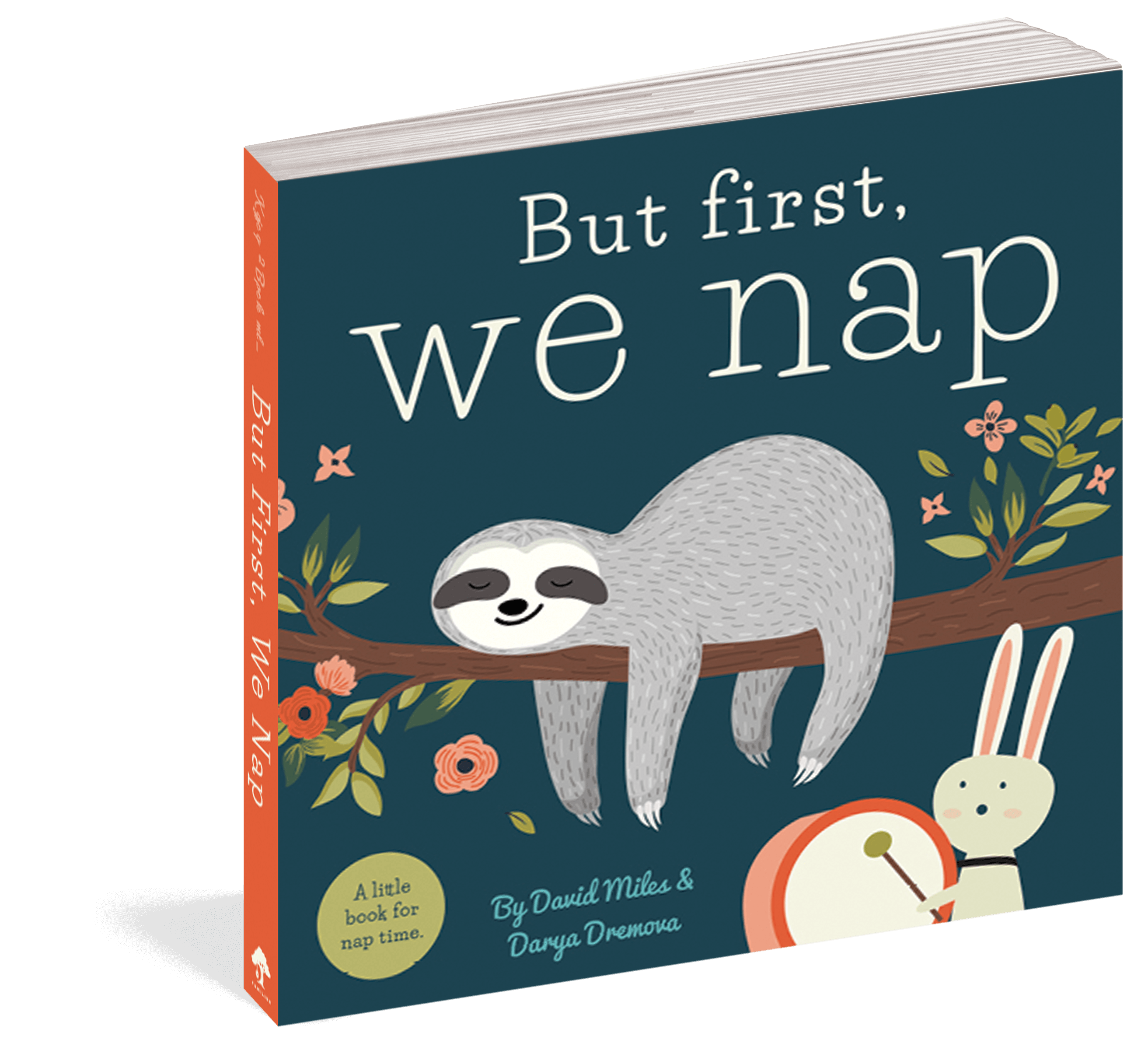
10 Ways to Organize Books to Reach Your Shelfie Goals (Even with Kids)
Want to take the perfect shelfie but are afraid your kids will mess it up? Try out these tips to organize your books and keep them shelfie ready—even with kids.
If you’re a book lover, you’ve probably seen shelfies all over social media. You know the ones. The ones with twinkle lights, color-coded books, and the shelves that go all the way to the ceiling. The kind of pictures that inspire serious shelf envy.
Well, that could be you. Yes, you. No more waiting for when your kids are older. No more books all over the floor. And no more searching for a missing book only to find it under the couch. You can get the shelf of your dreams today.
How, you ask? It just takes a little extra care and childproofing. But first, let’s talk aesthetic shelfie goals.
10 Ways to Organize Books for the Perfect Shelfie
There are millions of books in the world, and just as many ways to display them. But the question is, what’s the best way? Alphabetical, like having an actual library in your home? Color coded so that the whole shelf is in harmony?
Unfortunately (or maybe fortunately), organizing books is such a personal experience. You should love your shelf just as much as you love the books on it. We can’t tell you what that will look like. But we can tell you our favorite organization systems and the best styling tips for the perfect shelfie.
1. Alphabetical Order
This one’s completely self-explanatory. To achieve a library-worthy alphabetical shelf, organize books by the author’s last name or the title of the book. You can go A to Z or Z to A depending on which books you want to be easier to reach. This method is straightforward and easy to maintain. Every book will have its home, and your home will give off immaculate library vibes.
2. Genre or Category
A personal favorite of mine—the category shelves. Group books by genre, subject, or category. For example, you could have separate shelves for fiction, non-fiction, mystery, science fiction, children’s books, cookbooks, your spouse’s favorites, etc. Everyone will know exactly where to look for the books they want, as if walking through a bookstore. And the best part is that you can choose another organization system to have within this one.
3. Chronological Order
This system is for those who have been invested in their books for a long time. Simply arrange books based on their publication date. This method can be useful for tracking the development of a particular author or genre over time.
4. Color-Coding
Just like you would color code your clothes or crayons, organize books by their spine color to create an aesthetically pleasing arrangement. One of the most popular—and controversial—organization systems out there, this method is more visual than useful. But it can be a beautiful, artistic way to organize your bookshelf.
5. Size
When you’re stacking boxes do you want the large boxes on the bottom and the small on top? If yes, then this method is for you. To avoid giving your bookshelf jagged teeth, group books by their size, creating a visually balanced and organized look on your shelves.
6. Read/Unread
Some of us book lovers read books like it’s a marathon, which is a great habit for our families. But if you’re constantly buying books and sorting them into your read, to-be-read, and unread lists, your newest books can easily get lost in the mix. Instead, your bookshelf organization can do the work for you. On different shelves, and or even on opposite ends of the bookshelf, separate books you’ve read from those you haven’t.
7. Author’s Nationality or Origin
If culture is what interests you, arrange books based on the nationality or origin of the author. This method can provide insights into different cultural perspectives and can make for an interesting and one-of-a-kind world map.
8. Personal Rating System
You don’t want to keep your favorite books tucked away in a corner. To sort through the books you want to reread or donate, use a rating system to organize books based on your personal enjoyment or the perceived quality of the content. Then at the end of the year, you can easily display your year in books with just a simple shelfie. And for the books at the lowest end of your system, you can donate them to somebody who might love them.
9. Random or Eclectic Arrangement
Arrange books in a more random or eclectic way based on your personal preferences, when you bought the book, characters you loved, and anything else you can think of. Stack the books, create shapes, display your favorites, and just do whatever you want—it’s your shelf, after all—to create a unique and visually interesting bookshelf just for you and your family.
10. Choose More Than One!
As you’ve already seen, some of these methods allow you to organize books in more than one way. You can easily mix and match these organization systems to create the bookshelf of your dreams. One that keeps everyone’s favorites accessible and shelfie ready.
Tips for Keeping Your Bookshelf Organized with Kids
Now that we’ve covered making your shelf aesthetically pleasing, you might be thinking, What’s the point? My kids will just mess it up in one day. Parents, you are not alone! Short of creating a hidden bookshelf for the kids and forbidding them from even touching the living room bookshelf, keeping your books organized can seem like an impossible task.
Instead, try out these tips to keep your bookshelf shelfie ready—even with kids.
1. Labeling
Use clear labels or picture labels for different categories or genres. This helps kids easily identify where each type of book belongs. This hack works even better if you involve kids in the process. Let them help decide on how to organize books.
2. Bookshelf Bookmarks
Give your kids a painted ruler (personally decorated) to carry around and put in place of the book they want to read. These bookshelf bookmarks will help them immediately spot where to return their book. And even better, it will give them the library experience in your own home.
3. Low Shelves
As adults, we sometimes forget how little kids are. To account for this, separate the kids books from everything else and place the frequently accessed books on lower shelves so that kids can reach them easily. This encourages independence, and it will keep the rest of your shelves looking neater for longer.
4. Bins or Baskets
Separate the kids books from your shelves entirely. Instead, use colorful bins or baskets to store smaller books, magazines, or items related to specific themes. This makes it easy for kids to grab a basket and explore its contents without messing up your shelves.
5. Bookends
Use sturdy, stylish bookends to keep books standing upright. This prevents books from toppling over and helps maintain an organized appearance. (Even if nothing—literally nothing—is in the right place.)
6. Book Rotation
Rotate books regularly to keep the selection fresh and interesting for kids. You can introduce new books or highlight different themes each month. Doing this will also help you keep up on cleaning and organizing your books.
7. Personalized Sections
Create personalized sections for each child. Allow them to choose how they want to organize their own books, fostering a sense of ownership. You can have regular refresh parties where you sit down together and reorganize your books.
8. Book Display
Have a designated display area for featured or favorite books. This can be a rotating display that showcases different books at different times.
9. Reading Nooks
If space allows, create a cozy reading nook with a small bookshelf or book display, encouraging kids to spend time reading in a comfortable environment. This will keep books from traveling around the house.
10. Reading Bean Bag
Create a routine with a specific chair, like a bean bag, that the kids can drag out for reading time. And then emphasize how it’s only special if they get it out only for reading time. This will encourage kids to clean up after reading time, and it will also foster a special love of reading.
11. Regular Clean-Up
Schedule regular clean-up sessions with the kids. Encourage them to put books back in their designated places after reading. And less frequently, do a bookshelf refresh, where you donate books no one reads and reorganize the rest of your shelf to make room for new books.
12. Interactive Labels
Use interactive labels such as pictures or drawings to represent different categories. This can make it fun and engaging for younger children who may not be able to read yet.
13. Book Swaps
Organize occasional book swaps with other families or friends. This not only introduces new books but also reinforces the idea of sharing and community.
Books to Get in Your Shelfie

Good Moms Have Scary Thoughts

Made for Me

But First, We Nap
Shaelyn Topolovec earned a BA in editing and publishing from BYU, worked on several online publications, and joined the Familius family. Shae is currently an editor and copywriter who lives in California’s Central Valley.
